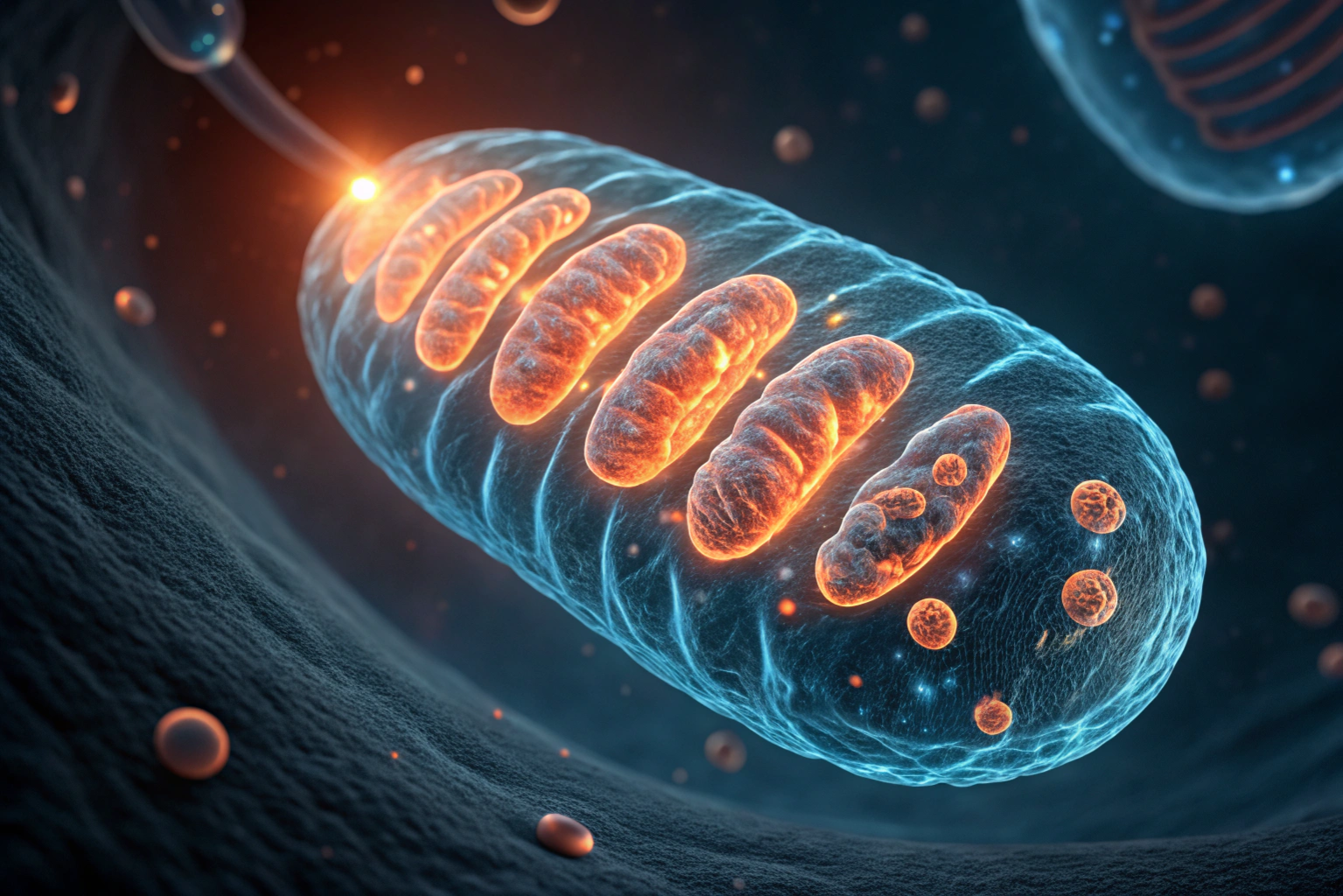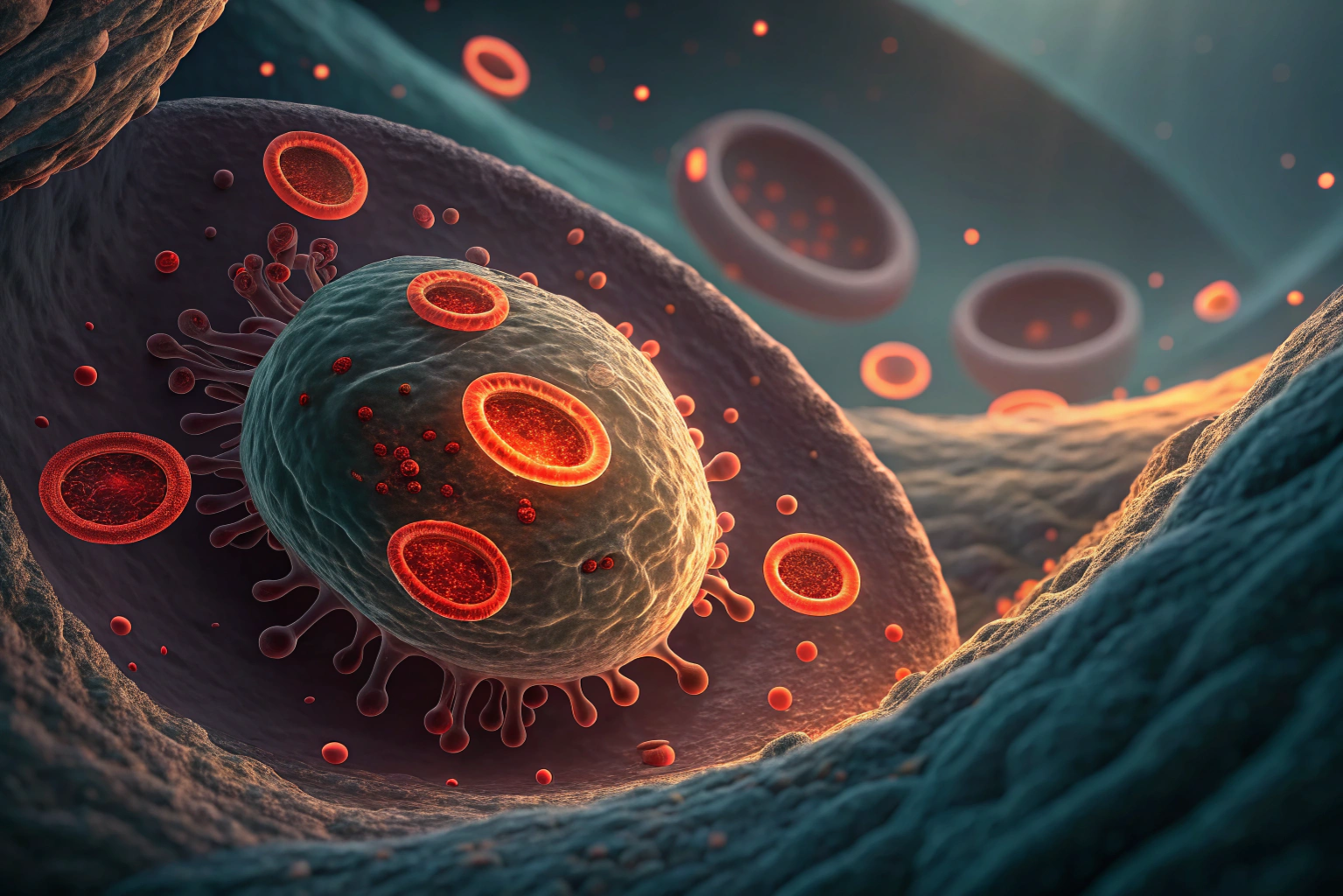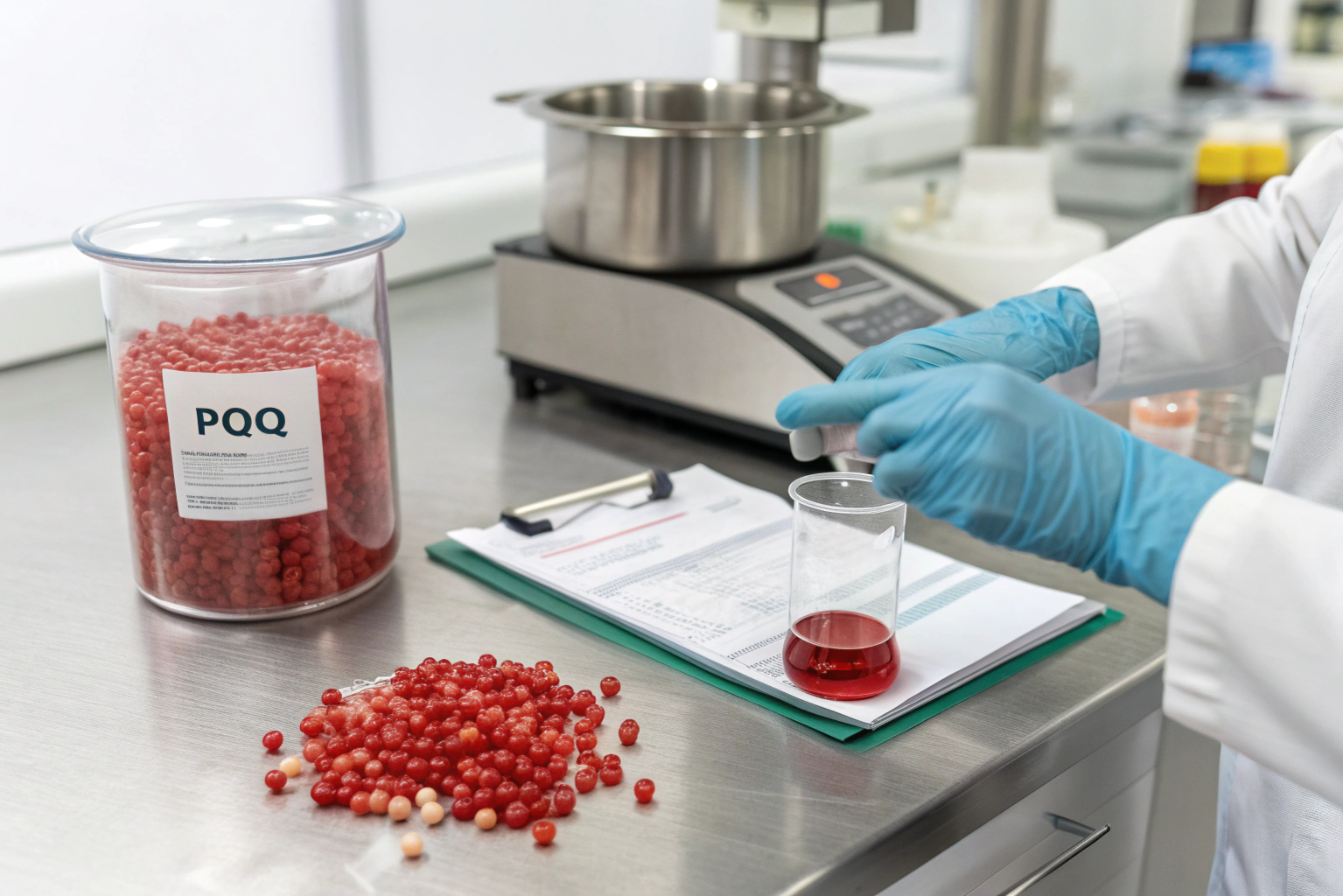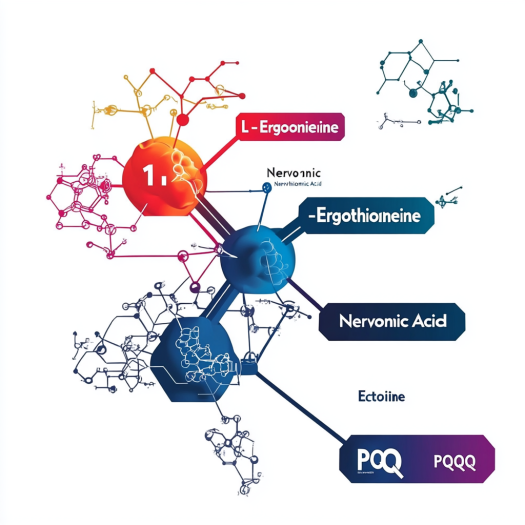
I still remember the first time I read about pyrroloquinoline quinone—PQQ. My morning coffee suddenly tasted like liquid potential.
PQQ is a tiny redox co-factor that slips into our cells, nudges mitochondria to multiply, and keeps their engines purring—so we feel more energy, focus, and resilience every single day.
Curiosity quickly became obsession as I uncovered how this micronutrient powers the very batteries of life.
Why Do Our Cells Treat PQQ as a VIP Co-Enzyme?
The more I dug, the clearer it became: cells roll out the red carpet for PQQ.
PQQ binds to specific dehydrogenases, shuttles electrons efficiently, and—unlike common antioxidants—regenerates itself, making it a preferred partner for mitochondrial enzymes hungry for consistent redox support.

If mitochondria are power stations, then co-enzymes are their seasoned engineers. Most vitamins, once oxidized, clock out; PQQ clocks back in. Researchers at the University of California found that nanomolar concentrations of PQQ restored enzyme turnover1 up to 500% compared with controls. The secret lies in its quinone ring2, capable of cycling between oxidized and reduced states thousands of times without structural fatigue. I like to picture it as a tireless courier darting between electron donors and acceptors, never once asking for overtime pay.
A Redox Dynamo
Inside the mitochondrial matrix, PQQ slips into sites reserved for glucose dehydrogenase and lysine dehydrogenase. By stabilizing transition states, it lowers activation energy, so substrates glide through metabolic checkpoints. The result? More NADH, more ATP, and fewer stalled reactions that normally leak damaging superoxide.
Nature’s Choice
Why would evolution favor such a rare molecule? PQQ exists in soil microbes that withstand extreme swings in temperature and oxidation. When we consume those microbes—think fermented foods or Shiso leaves—PQQ piggybacks into our diet. Some researchers even propose mammalian symbiosis: our cells outsource synthesis to gut bacteria, then import the finished compound via specialized transporters. It’s a metabolic love story spanning two kingdoms of life.
How Does PQQ Ignite the Mitochondrial Spark Plug?
Even the best engineers need tools; for mitochondria, PQQ is a precision wrench.
Once inside the cell, PQQ activates PGC-1α, CREB, and NRF-1 signaling, initiating mitochondrial biogenesis—essentially instructing the cell to build brand-new power plants while refurbishing the older ones.
Activation begins with a short-lived oxidative burst: PQQ tweaks redox-sensitive proteins, nudging calcium influx. Calcium, in turn, wakes up calmodulin-dependent kinase, which phosphorylates CREB. Phosphorylated CREB binds DNA at responsive elements upstream of PGC-1α. When PGC-1α is upregulated, mitochondrial DNA replication accelerates like café Wi-Fi at 3 a.m.
| Signaling Node | Role Triggered by PQQ | Outcome |
|---|---|---|
| CREB | Phosphorylation via CaMKIV | Up-scales PGC-1α transcription |
| PGC-1α | Master co-activator | Turns on mitochondrial DNA replication genes |
| NRF-1/2 | Nuclear respiratory factors | Boosts oxidative phosphorylation proteins |
| TFAM | Mitochondrial transcription factor | Copies mitochondrial genomes, ensuring newborn mitochondria thrive |
The net effect is an army of freshly minted mitochondria that pump out ATP efficiently, lowering fatigue and oxidative burden simultaneously. Imagine swapping a fleet of smoky diesel trucks for silent electric vehicles overnight—less soot, more miles.
Clinical trials aren’t just lab folklore. In a double-blind Japanese study, adults taking 20 mg PQQ daily for eight weeks showed a 30% rise in urinary N-acetyl-β-D-glucosaminidase—an indirect marker of mitochondrial biogenesis. Subjects reported sharper attention and quicker reaction times on Stroop tasks, correlating neatly with biochemical markers.
Can Taking PQQ Really Boost Daily Energy and Focus?
Skeptical? I get it. Supplements often promise the moon but deliver moon-pies.
Participants supplementing with 10–40 mg of PQQ report sustained energy, reduced perceived exertion, and measurable drops in salivary cortisol—suggesting PQQ tames both cellular and psychological fatigue.
Let’s humanize the data. Last spring, I convinced my 54-year-old client Jerry Li—busy CEO, weekend cyclist—to try PQQ from our inventory. Within three weeks, he texted: “Not crashing after afternoon rides anymore. My Zoom calls feel less foggy.” Sure, anecdotal, yet his Garmin data echoed the sentiment: average power output climbed 7%, heart-rate recovery improved 12 beats in one minute.
Researchers at the University of Tsukuba back this up. Volunteers who swallowed 20 mg PQQ for six weeks shaved 2.3 seconds off their Psychomotor Vigilance Task3 latency—think of that as blinking less at red lights in rush-hour traffic. MRI scans revealed increased regional cerebral blood flow in the prefrontal cortex, aligning with real-world improvements in executive function.
Beyond ATP
Energy isn’t purely mitochondrial. PQQ modulates Nrf2 and HO-1 pathways, dialing down inflammation that often saps vigor. It also chelates metal ions, preventing the Fenton reaction that spews hydroxyl radicals. By reducing oxidative drain and inflammatory chatter, PQQ frees metabolic bandwidth for tasks that matter—solving problems, creating art, chasing grandchildren in the yard.
Mood and Sleep Crosstalk
Sleep quality underpins daylight performance. One randomized trial reported that subjects taking PQQ felt asleep 18 minutes faster and enjoyed deeper stages of sleep. Lower serum cortisol and C-reactive protein signaled a body less wired for fight-or-flight, more ready for repair.
What Dosage and Form of PQQ Gives Best Bioavailability?
This question pops into my inbox weekly.
The consensus sweet spot sits between 10–40 mg PQQ disodium salt per day, with crystalline forms encapsulated in vegetable capsules achieving up to 60% higher plasma AUC than chewable tablets containing binders.
Formulation is my playground: Santa Biotech offers water-soluble PQQ in bulk powder, 200 mesh fineness, tested by HPLC for >99% purity. Pairing it with medium-chain triglycerides (MCTs) enhances lymphatic transport, bypassing first-pass hepatic clearance. If you prefer gummies, we use pectin—no gelatin—to protect integrity through the heating stage.

Delivery Matrix Matters
Capsules win for precision dosing; gummies win for compliance. Powders in sachets suit endurance athletes mixing isotonic drinks. Whatever format you choose, check for solvent-free manufacturing—our PQQ meets USP, EU, and JP standards, with heavy metals far below Prop 65 limits. Feel free to peek at the full certificate of analysis on our PQQ ingredient page and verify.
Timing and Synergy
Morning with breakfast is ideal; the fat content amplifies absorption. I often stack PQQ with 100 mg CoQ10. The duo behaves like dual spark plugs—PQQ births new mitochondria, CoQ10 keeps electron transport chains humming. Magnesium glycinate rounds out the stack, calming nerves while supporting hundreds of enzymatic steps required for ATP synthesis.
Where Does PQQ Fit into a Busy Formulator’s Toolkit?
As a marketing director, I speak to formulators juggling ingredient costs, shelf life, and label claims.
PQQ unlocks multiple angles—energy, cognition, healthy aging—letting product developers streamline SKUs while tapping high-value consumer trends, from “bio-hacking” to “clean mitochondrial support.”
Take cognitive health capsules. Adding 20 mg PQQ lets you justify “supports mitochondrial biogenesis,” a claim validated by human trials. In hydration powders, 5 mg PQQ complements electrolytes, promising cellular resilience during workouts. Skin-care serums? Topical PQQ at 0.1% reduced UV-induced wrinkle depth in a mouse model—imagine coupling it with ectoine for a one-two punch of hydration and antioxidant defense.
| Product Type | Typical PQQ Dose | Marketing Hook | Compatible Actives |
|---|---|---|---|
| Vegan Capsules | 10–40 mg | Energy & Focus | CoQ10, B-vitamins |
| Effervescent Tablets | 5–15 mg | Rapid Uptake | Vitamin C, electrolytes |
| Sachet Powders | 5–20 mg | Endurance Fuel | Beta-alanine, creatine |
| Gummies | 10 mg | Anti-aging Treat | Collagen, biotin |
| Topical Serum | 0.1–0.3% | UV Defense | Ectoine, niacinamide |
Regulatory Alignment
In the U.S., PQQ is self-affirmed GRAS up to 20 mg/day in functional beverages. EU novel food status cleared safety at 20 mg/day for adults. Japan lists PQQ as a “food with functional claims” (FFC) ingredient—perfect for global expansion.
Cost vs. Value
Yes, PQQ’s price per kilo eclipses regular vitamins; yet its effective dose is micro, so cost per serving remains competitive. Factor in premium positioning, and PQQ often increases retail price elasticity, not ingredient margin pressure.
Shelf Stability
Our micro-encapsulated PQQ withstands 40 °C/75 % RH for three months with <3 % degradation, validated by accelerated testing. That means fewer reformulations down the road.
Conclusion
Harness PQQ wisely, and your mitochondria—and customers—will thank you with pure, steady vitality.
-
Learn about enzyme turnover to grasp its significance in metabolic processes and how it affects overall health. ↩
-
Discover the fascinating role of the quinone ring in energy transfer and its importance in cellular processes. ↩
-
Learn about the Psychomotor Vigilance Task to grasp its importance in measuring cognitive performance and reaction times. ↩

